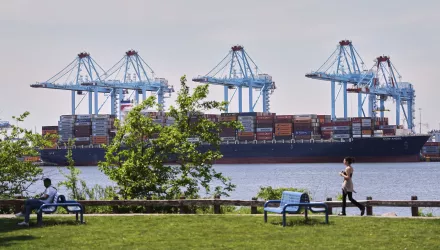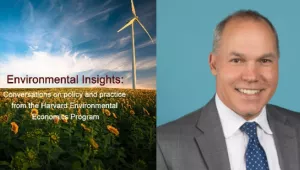SUMMARY FOR POLICYMAKERS
OVERVIEW
The United Nations Framework Convention on Climate Change (UNFCCC) has significant advantages but also real challenges as a venue for international negotiations on climate change policy. In the wake of the Fifteenth Conference of the Parties (COP-15) in Copenhagen, December 2009, it is important to reflect on institutional options going forward for negotiating and implementing climate change policy.
DISCUSSION
As a UN affiliate, the UNFCCC has international legitimacy, particularly among developing countries, as well as administrative and institutional resources that could be essential for implementing any negotiated climate agreement. Yet COP-15—and the process before and since—has drawn attention to three institutional challenges facing the UNFCCC: the number and diversity of its parties; a decision-making process that gives each country the same standing regardless of its emissions or its vulnerability to climate change, and requires consensus among parties; and a long-standing divergence between developed and developing countries that has overly politicized negotiations.
Alternative institutional options could supplement the UNFCCC process, and thereby help facilitate the negotiation and implementation of a future international climate policy regime. These include potential roles for the Major Economies Forum on Energy and Climate (MEF), the G-20, and bridging states; a more fragmented approach to global climate policy that uses differentiated institutions for various aspects of climate policy; and developing institutional means of facilitating learning and trust. Lessons can be learned by examining international regimes in other areas of policy.
KEY FINDINGS & RECOMMENDATIONS
- By most accounts, the MEF and G-20 have been effective venues for discussion that perhaps could extend to the UNFCCC. Because their members hail from the developing and developed worlds, their views carry some international legitimacy. However, neither is constituted as a forum for negotiation on climate change, and both lack the administrative and technical resources for policy implementation.
- Certain key "bridging states" have interests representative of both developing and industrialized countries, and may therefore serve to facilitate and improve the legitimacy of climate negotiations. Candidates include Mexico, the Republic of Korea, and Turkey.
- Another set of institutional options involves addressing various aspects of climate policy in separate institutional venues. The result might be a loosely coupled set of regimes, a portfolio of international sectoral agreements, or separate institutions for mitigation, adaptation, and geoengineering.
- The international trade regime illustrates the usefulness of viewing climate policy as a process—punctuated by spurts of movement in the form of negotiated trade agreements, each of which builds on previous agreements—rather than an end point that requires little further negotiation or elaboration once it is achieved. Lessons might also be drawn from the trade regime's customized accession procedures.
- Measurement, reporting, and verification was central to much of the debate at COP-15, and the experience of the nuclear nonproliferation regime illustrates how international cooperation can sustain an effective technical monitoring organization that in turn facilitates even broader cooperation. It also highlights the importance of complementary bilateral agreements and the usefulness of alternative forums that are dedicated to solving technical problems.
- Negotiations might benefit from trust built through institutional learning. Learning decreases uncertainty, which countries often use as an argument for inaction. As one example, the International Energy Agency might serve a learning function in assessing mitigation performance and developing techniques for accurately and fairly comparing disparate policies to reduce emissions. The UNFCCC itself might specialize more closely in the future in collecting and exchanging information—and thereby building trust among parties.
CONCLUSION
Several implications arise from this assessment of existing and potential institutions for international climate governance:
- A variety of institutional options exist for international climate policy, but the most promising ones all involve some combination of the UNFCCC and a diverse set of other organizations for negotiation and policy implementation.
- The UNFCCC may increasingly play a role functionally similar to the G-20 and MEF—as a forum for discussing concepts and exploring approaches to resolve conflicting values, especially between developing and industrialized countries.
- Unlike the G-20 and the MEF, the UNFCCC has the authority to serve as a forum for negotiation, but whether it is capable of using that authority effectively will become apparent only over time.
- The UNFCCC may increasingly specialize in data gathering through national communications and the implementation of policy, as it does now with the CDM, through the Executive Board, working groups, and subsidiary bodies.
Stowe, Robert. “Institutions for International Climate Governance.” November 2010





